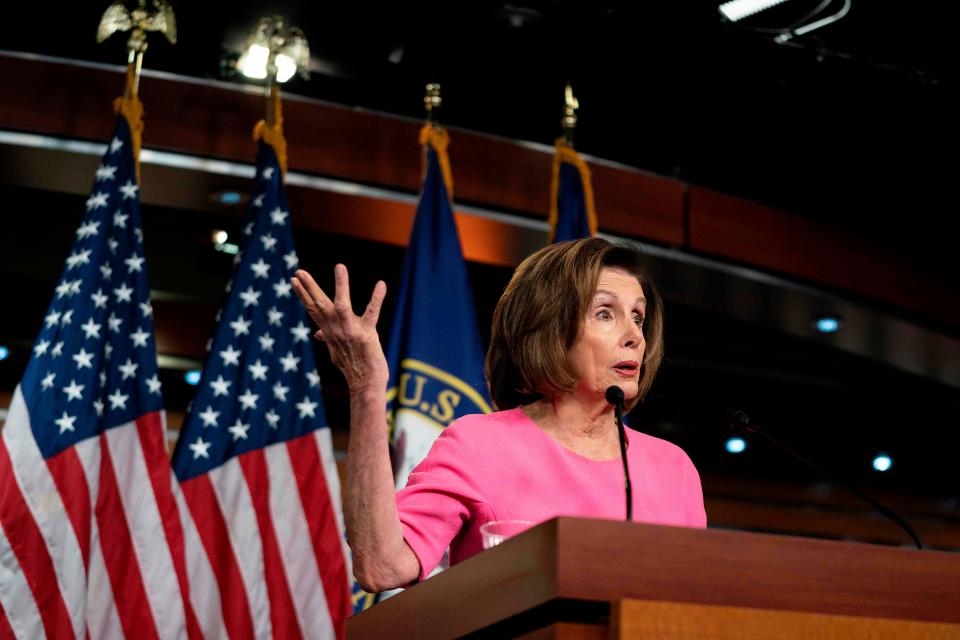Coronavirus highlights a US presidential succession problem, and it's not Pelosi at 80
The sweeping nature of the novel coronavirus pandemic, and especially the dangers faced by those over 60 years old, highlight longstanding questions about America’s government and its line of succession. In this case, we once again see that a poorly thought out Senate tradition presents a potential problem.
Ever since 9/11, there have been serious questions about how to deal with massive disruptions in America’s leadership, including what would happen if a significant part of Congress and the federal government leadership was put out of action.
Even more plausibly, there have been questions about the basic line of succession, which itself is fairly straightforward. If the president dies, is removed or incapacitated, the vice president takes over. If both of them are out of the picture, then the Speaker of the House steps up. If the speaker is also unavailable, then the Senate president pro tempore moves in. And that’s where questions need to be asked.
Speaker Nancy Pelosi turned 80 on Thursday, but there's good reason to believe that she — or frankly anyone serving in the demanding role of leader of the House — would be able to step up to the presidency. If not, the majority party in the House would likely replace the speaker with someone capable of handling the job.
Decapitating strike almost happened
The Senate president pro tempore, the next in line for the presidency after the vice president and House speaker, is the only Senate position actually mentioned in the Constitution itself. And it is very different.
By Senate tradition, the majority party elects its longest-serving member to this ceremonial position. The actual Senate majority leader, 78-year old Mitch McConnell, does not serve in this role. Instead, it's Sen. Chuck Grassley of Iowa, who is 86. And Grassley himself is not even the problem. Compared to some of his predecessors, he is man in the prime of life.

In recent years, 99-year old Strom Thurmond and 92-year old Robert Byrd both served as president pro tempore. Thurmond, who held the position months before the 9/11 attacks, had the job as Senate Armed Services chairman effectively taken away from him because he was manifestly unable to perform. Byrd was forced out as Appropriations Committee chair for the same reason. And yet, the senators chose to keep both of these men as potential future presidents during a time when the country was targeted by terrorist attacks or at war.
What is quite surprising is that a decapitating strike against three officials is not some weird fictional scenario. When John Wilkes Booth killed President Abraham Lincoln in 1865, there were scheduled attempts on three other senior leaders, two directly in the line of succession. The assassin who targeted Vice President Andrew Johnson abandoned the plan and spent the night drinking. Secretary of State William Seward was stabbed by a failed assassin and General Ulysses S. Grant was supposed to be killed with Lincoln, but he did not end up attending the play.
The situation today could actually be worse. Under the original law that held from 1792 to 1886, the president pro tempore was in line in front of the speaker, and there was no 25th Amendment that allowed for the replacement of a vice president in case of the death of either official. This law was changed in 1886, after two decades in which two presidents were assassinated, two vice presidents died in office, and one president was impeached (with his potential replacement, Senate President Pro Tempore Benjamin Wade, sitting in judgment at the Senate trial).
At that point, Congress changed the law, putting the cabinet members, starting with the secretary of state, over elected congressional officials in the line of succession. That law was then changed in 1947, but this time the speaker of the House moved in front of Senate president pro tempore.
It is obviously not clear which is the best succession plan. The Continuity of Government Commission has pushed for the idea that cabinet members should be first, so that the president's party does not lose power, as would happen today. On the other hand, Harry Truman, among others, believed that since congressional leaders are elected rather than appointed, they are the more appropriate candidates to step up.
But everyone can agree that any person who is in line should be able to take over at what would be an unprecedented time of national crisis. And while Grassley may or may not be up to the role, it is clear that senators who held the pro tempore position in the past, such as Byrd and Thurmond, would have been completely unable to step up and do the job.
Joshua Spivak is a senior fellow at the Hugh L. Carey Institute for Government Reform at Wagner College. He writes the Recall Elections Blog.
You can read diverse opinions from our Board of Contributors and other writers on the Opinion front page, on Twitter @usatodayopinion and in our daily Opinion newsletter. To respond to a column, submit a comment to letters@usatoday.com.
This article originally appeared on USA TODAY: Coronavirus dangers to seniors highlight an unwise Senate tradition

